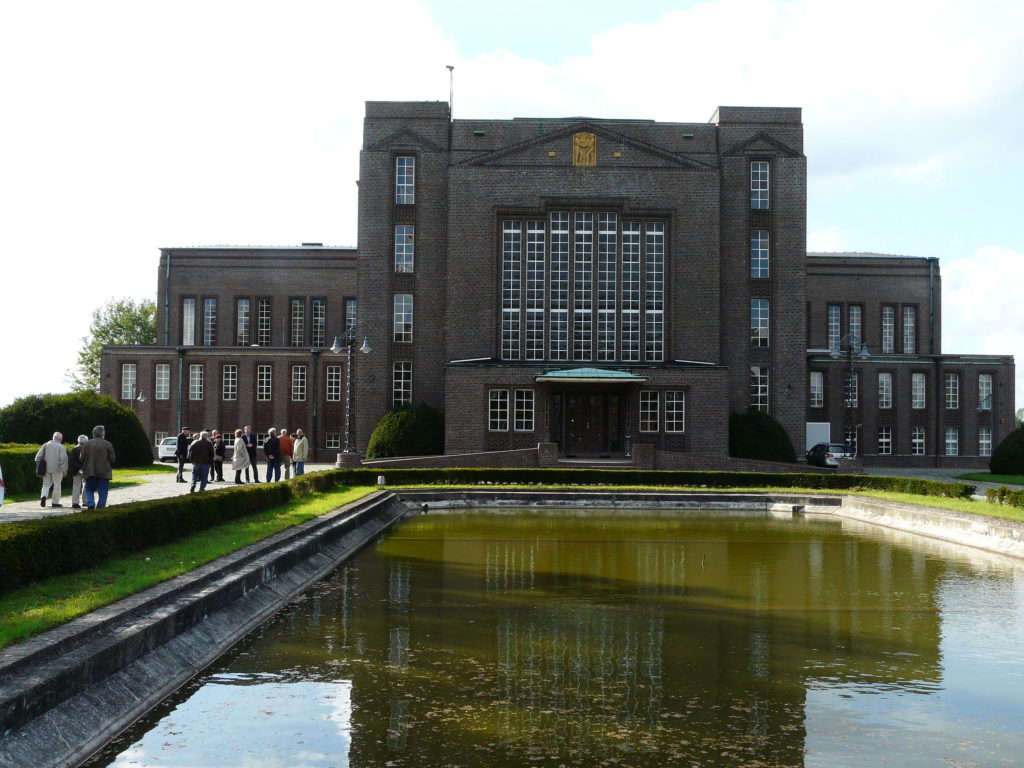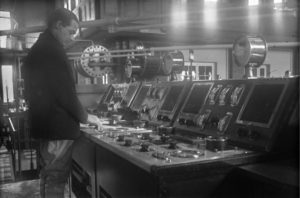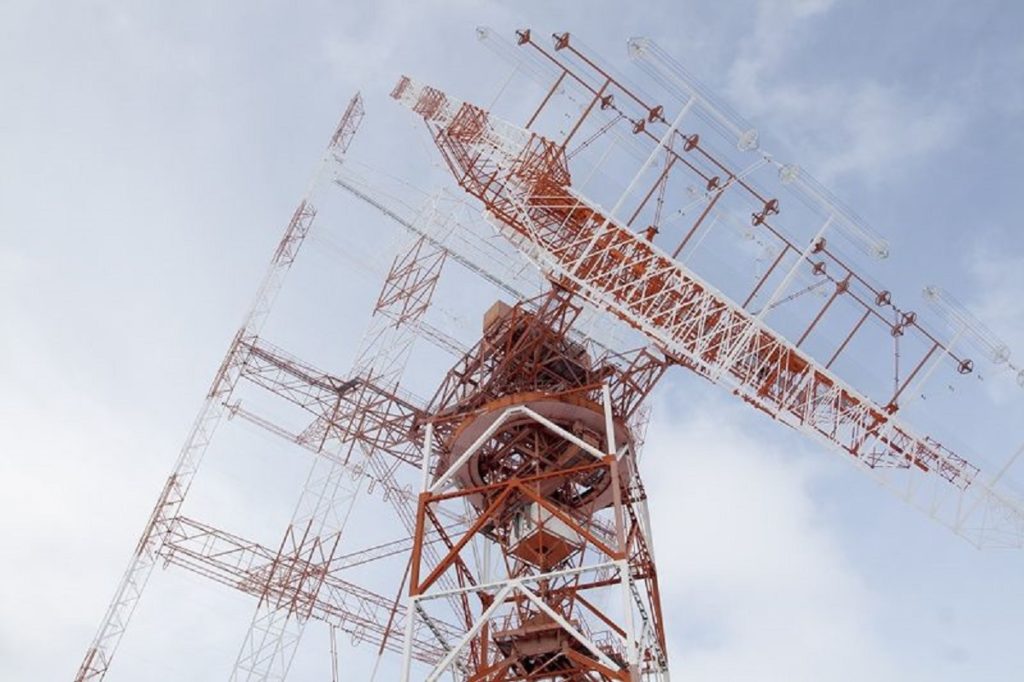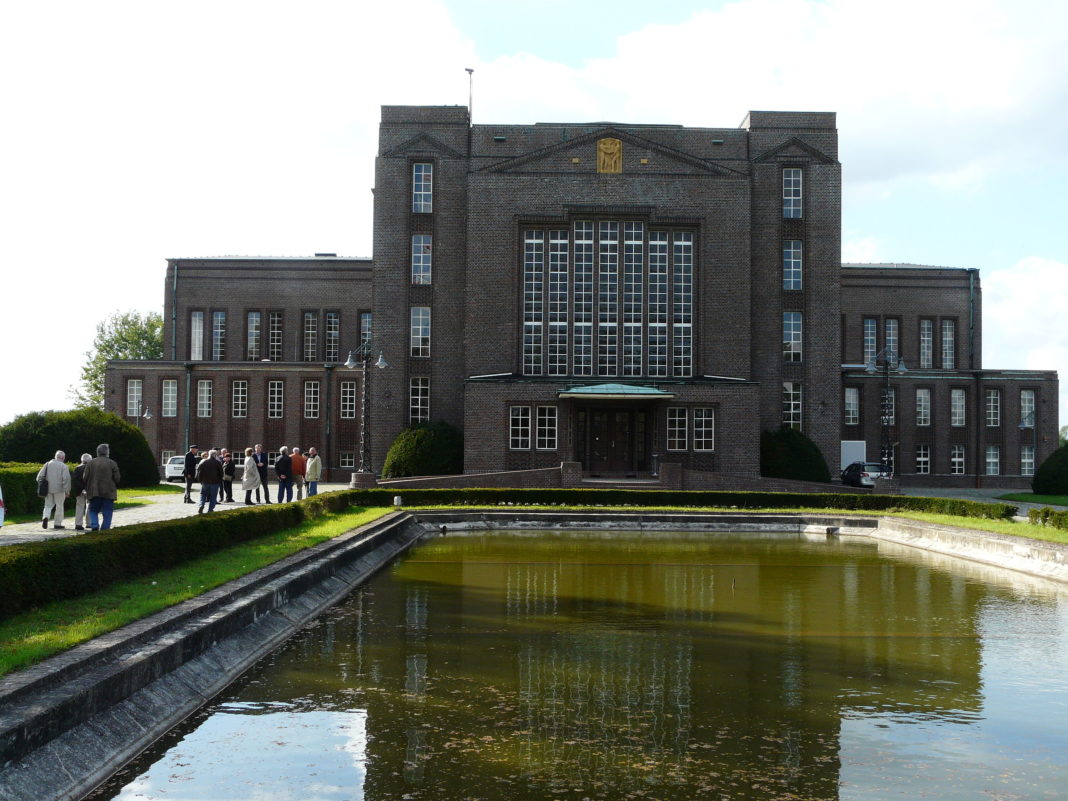Nauen Transmitter Station in Nauen, Havelland district, Brandenburg, Germany, is the oldest continuously operating radio transmitting installation in the world. Germany’s first high-power radio transmitter, it was founded on 1 April 1906 by Telefunken corporation and operated as a longwave radiotelegraphy station through World War II, and during World War I became Germany’s main link with the outside world when its submarine communications cables were cut. Upgraded with shortwave transmitters in the 1920s it was Germany’s most advanced long-range radio station, continually upgraded with the latest equipment and serving as an experimental station for Telefunken to test new technology.

The Telefunken company, founded in 1903 by German radio pioneers Adolf Slaby, Georg von Arco, and Karl Ferdinand Braun, was (with its rival, Britain’s Marconi Company) one of the two giant wireless firms of the age. Built by Telefunken under the direction of engineer R. Hirsch on a 40-hectare property north of Nauen, leased from Fideikommissar Fritz Stotze, the Nauen station was Germany’s first high-power radio transmitter. Trial service was initiated on 9 August 1906, and operational service began on 16 August 1906 using a 25 kW spark gap transmitter designed by von Arco, which fed an umbrella antenna supported by a steel lattice mast 100 meters high, insulated from earth.

The Telefunken company, founded in 1903 by German radio pioneers Adolf Slaby, Georg von Arco, and Karl Ferdinand Braun, was (with its rival, Britain’s Marconi Company) one of the two giant wireless firms of the age. Built by Telefunken under the direction of engineer R. Hirsch on a 40-hectare property north of Nauen, leased from Fideikommissar Fritz Stotze, the Nauen station was Germany’s first high-power radio transmitter. Trial service was initiated on 9 August 1906, and operational service began on 16 August 1906 using a 25 kW spark gap transmitter designed by von Arco, which fed an umbrella antenna supported by a steel lattice mast 100 meters high, insulated from earth. The Telefunken company, founded in 1903 by German radio pioneers Adolf Slaby, Georg von Arco, and Karl Ferdinand Braun, was (with its rival, Britain’s Marconi Company) one of the two giant wireless firms of the age.

Built by Telefunken under the direction of engineer R. Hirsch on a 40-hectare property north of Nauen, leased from Fideikommissar Fritz Stotze, the Nauen station was Germany’s first high-power radio transmitter. Trial service was initiated on 9 August 1906, and operational service began on 16 August 1906 using a 25 kW spark gap transmitter designed by von Arco, which fed an umbrella antenna supported by a steel lattice mast 100 meters high, insulated from earth.
According to Wikipedia














